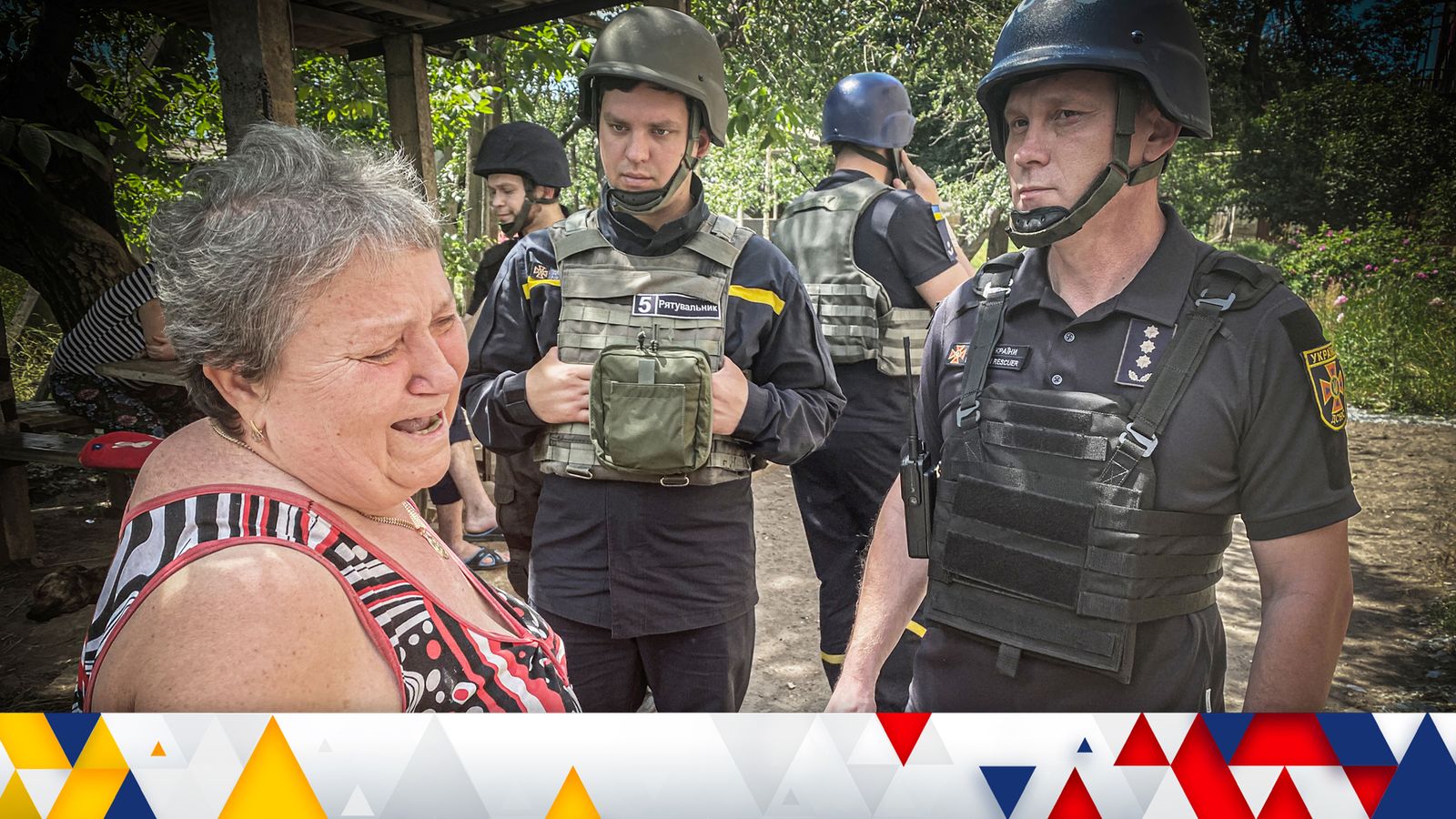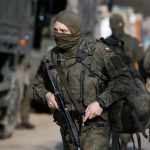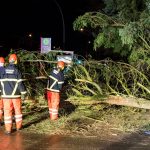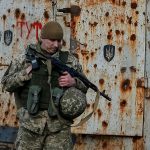The always sickening sound of incoming and outgoing artillery, mortars and rockets punctuates the otherwise silent streets of the frontline Ukrainian town of Bakhmut.
We clamber into an enormous armoured personnel carrier, painted white by the local emergency services.
They call it the ‘capsule’ and they’ve recently started using it to spearhead their evacuation efforts in the towns and villages just a few miles from Russian frontline positions.
The fierce fighting in the cities of Severodonetsk and Lysychansk is on a knife edge.
If they fall and the Russians take the highway south, known here as the ‘road of life’, then there is no way out for those left behind.
The ‘capsule’ heads into the countryside. This crew from the Bakhmut District State Emergency Services has been called to take people out of the frontline town of Soledar.
We pass through heavily-armed Ukrainian defensive positions, their tanks and artillery hidden in trees – the countryside a network of newly-dug trenches.
Ukraine war: Teenager returns to ruined school in prom dress she never got to wear
Ukraine war: Russia renews focus on northern axis as it begins handing over remains of Mariupol fighters
Ukraine war: Estonian prime minister urges West to hold firm despite strains over economic impact
The rescue team tells us they can never be sure how many people have taken a place on the evacuation truck.
These men have saved thousands since the beginning of the war.
“We’ve been told of three today, maybe six, but sometimes nobody comes out or they change their minds,” Major Artur Spitsin, who is leading the mission, told me.
“There’s been firing this morning, so it can put people off from leaving.”
It seems counterintuitive to us that, as it gets more dangerous and the incoming fire intensifies, people are less willing to leave their homes.
But that is often the case in wars across the world. They stay despite the danger and complete lack of water, electricity, or anywhere to get food.
It’s happening all along the frontline here.
‘I don’t want to impose myself’
Our first stop is at a large apartment block, where Major Spitsin and his team start banging on doors, trying to find those who have asked to leave.
But 76-year-old Natalia Babenko tells them she is the only person left, just her and her dog – and she won’t go.
“You know, I’m sick, and I don’t want to impose myself on other people and go from place to place, I don’t want that,” she explains to me.
“Aren’t you scared though?” I ask her.
“I am, I’m scared… it’s really scary.”
These towns and villages appear deserted, but there are plenty of people still here.
Sometimes, with the fighting growing in intensity nearby, they just don’t show up to evacuate. They’re too scared.
The crew want to look for others but they spot a military position not far away and tell us we’re in danger and need to leave immediately.
‘There is always f****** shooting’
They gather to quickly discuss the next destination.
“It’s the only way, we have no other option,” Major Artur Spitsin says to his team.
“The road where there is always f****** shooting?” one of them responds.
“Yes…” he says.
“Well, f*** it, it should be okay now, we should go there.”
“Let’s go, let’s not waste time here anymore.”
Decision made.
We weave our way towards the next stop in Soledar, along the Ukrainian frontlines.
We reach a group of people cooking outside. There’s no water or power anymore.
The emergency workers approach two women and tell them it’s time to evacuate.
“If God wants me to live or to save me, I’ll be saved,” one of the women tells them.
The women then start arguing about if one of them should go, before agreeing they won’t.
“If it gets worse and the situation gets more critical, and you want to leave, we might not be able to get here,” the crew try to reason with them.
They wave them off: “Thank you so much, boys!”
‘Everything we’ve worked for is here’
They’re choosing to stay underground in the darkness of a basement. There are 23 of them living there.
They collect water in buckets and an old, small radio, sitting on a makeshift table, is their only contact with the outside world.
It’s miserable but it is home.
“We don’t want to go, because if we leave… well, here at least we have our own homes, apartments, everything we’ve worked for in our lives is here. If we leave, we won’t return, and in the end, we’ll be destitute,” 70-year-old Nadezhda says to me while her 95-year-old mother watches on.
The residents are having none of it, they won’t leave.
As we prepare to go, Nadezhda emerges from her underground home.
She’s in tears, emotional, and verging on hysterical.
She says she is a mother worried for her two sons and her grandchildren – and then she turns towards us and says she is worried for us, and that she worries and feels for our mothers.
‘Your mothers are the same as I am’
“I wish you health, and your mothers I wish patience, you’re all your mothers have… I love you all. I wish you health, and patience to your mums!” she shouts through her tears.
Tearfully, she hugs each one of us, and we leave.
“Boys, please, my condolences to your mothers. Your mothers are the same as I am…”
This small group, choosing to remain, return to their fire and cooking pots quietly bubbling away.
They may never leave this place.
They watch as their only guaranteed way out, the ‘capsule’, disappears in the dust.
Stuart Ramsay reports from the Donbas with cameraman Dan Morgan, producers Dominique Van Heerden, Azad Safarov and Mark Grant.






















